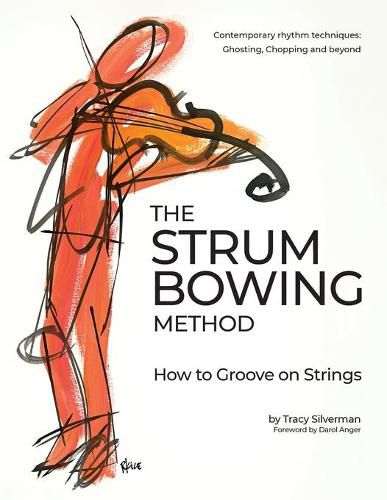Readings Newsletter
Become a Readings Member to make your shopping experience even easier.
Sign in or sign up for free!
You’re not far away from qualifying for FREE standard shipping within Australia
You’ve qualified for FREE standard shipping within Australia
The cart is loading…






This title is printed to order. This book may have been self-published. If so, we cannot guarantee the quality of the content. In the main most books will have gone through the editing process however some may not. We therefore suggest that you be aware of this before ordering this book. If in doubt check either the author or publisher’s details as we are unable to accept any returns unless they are faulty. Please contact us if you have any questions.
Popular music relies heavily on a strong underlying rhythm, or groove. Contemporary grooves are foundational to the study of guitar, drums and other instruments, and they are essential to playing in jazz and rock ensembles. String playing, however, comes largely from the classical tra- dition grounded in 18th and 19th century European music. The result is that young string players are not being taught how to play the music of their own contemporary musical culture. The time has come to retool our playing–for ourselves, for our students, and for the greater groove!
This area of post-classical string playing is so new that a comprehensive pedagogy hasn’t yet been developed, and there is a palpable need for a simple, unified approach. Strum Bowing encompasses all the different al- ternative bow techniques–Chops, Shuffles, Ghost Notes, etc.–by targeting the common thread linking grooves in all styles: the subdivision of the beat.
The best entry point to contemporary popular styles is through rhythm, and for string play- ers, the way to the rhythm is through the bow. With Strum Bowing, you physicalize the subdivision with your bow as if you were strumming a guitar, creating grooves by bringing out accents and dropping Ghost Notes.
In this book, we will approach Strum Bowing as:
We’ll learn how to use grooves as the entry point to improvisation as well as how to bring rhythmic vitality to classical music.
The Strum Bowing Method functions as both a how-to manual for the amateur or profes- sional player and as the conductor/instructor companion to 22 Groove Studies for Strings, a collection of Strum Bowing etudes for middle school through college level string ensembles.
$9.00 standard shipping within Australia
FREE standard shipping within Australia for orders over $100.00
Express & International shipping calculated at checkout
This title is printed to order. This book may have been self-published. If so, we cannot guarantee the quality of the content. In the main most books will have gone through the editing process however some may not. We therefore suggest that you be aware of this before ordering this book. If in doubt check either the author or publisher’s details as we are unable to accept any returns unless they are faulty. Please contact us if you have any questions.
Popular music relies heavily on a strong underlying rhythm, or groove. Contemporary grooves are foundational to the study of guitar, drums and other instruments, and they are essential to playing in jazz and rock ensembles. String playing, however, comes largely from the classical tra- dition grounded in 18th and 19th century European music. The result is that young string players are not being taught how to play the music of their own contemporary musical culture. The time has come to retool our playing–for ourselves, for our students, and for the greater groove!
This area of post-classical string playing is so new that a comprehensive pedagogy hasn’t yet been developed, and there is a palpable need for a simple, unified approach. Strum Bowing encompasses all the different al- ternative bow techniques–Chops, Shuffles, Ghost Notes, etc.–by targeting the common thread linking grooves in all styles: the subdivision of the beat.
The best entry point to contemporary popular styles is through rhythm, and for string play- ers, the way to the rhythm is through the bow. With Strum Bowing, you physicalize the subdivision with your bow as if you were strumming a guitar, creating grooves by bringing out accents and dropping Ghost Notes.
In this book, we will approach Strum Bowing as:
We’ll learn how to use grooves as the entry point to improvisation as well as how to bring rhythmic vitality to classical music.
The Strum Bowing Method functions as both a how-to manual for the amateur or profes- sional player and as the conductor/instructor companion to 22 Groove Studies for Strings, a collection of Strum Bowing etudes for middle school through college level string ensembles.